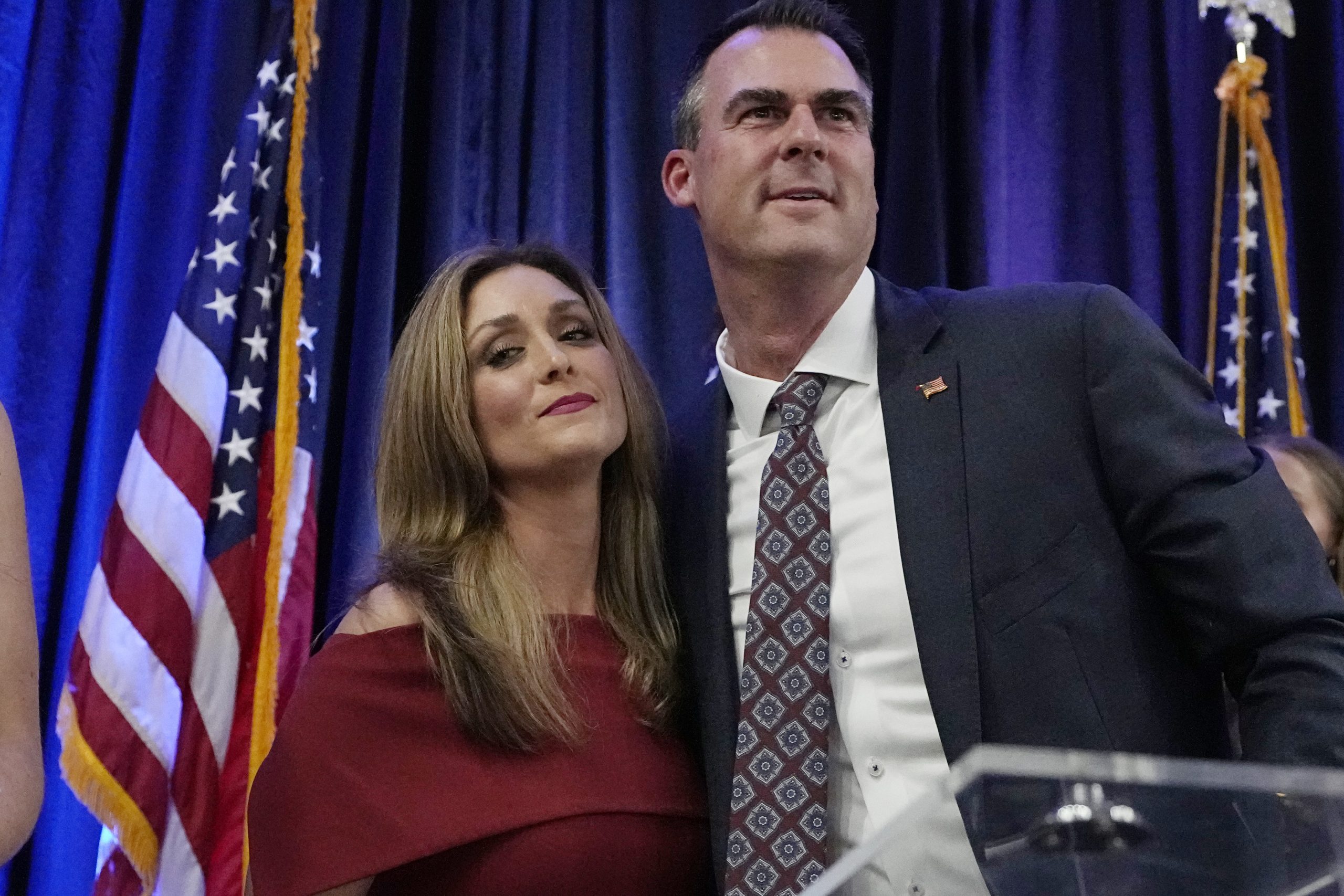Oklahoma Gov. Kevin Stitt (R) fended off an onslaught of political challenges to his reelection on Tuesday, defeating a former GOP aide who switched parties to run against him, millions spent on dark money ads, and a strong rebuke from leaders of the state’s most prominent Native American tribes.
Stitt, 49, won with a nearly 14-point lead (56% to 42%) over his Democratic rival, Joy Hofmeister, who served as the state’s former superintendent of public instruction and changed parties last year in a bid to run against what she alleged as “cronyism” within the Stitt administration, with Hofmeister claiming that he is more loyal to the Republican Party than he is to the citizens of the Sooner State.
“Oklahomans stated loud and clear today they are proud of how far we have come,” Stitt said during an election night watch party after the results poured in, which ultimately landed him with a wider margin of victory than his 2018 election. The outcome defied the media narrative that his reelection stood on shaky ground after several divergent polls prompted reports that he faced an unusually tough race in the deep-red state.
MIDTERM RESULTS: OKLAHOMA GOP GOV. KEVIN STITT WINS REELECTION AGAINST DEMOCRAT JOY HOFMEISTER

In the final days leading up to the Nov. 8 election, the incumbent governor was aided in part by a late burst of advertisements from the Republican Governors Association that sought to link his Democratic rival to President Joe Biden, who lost all of the state’s 77 counties in the 2020 presidential election.
The outside group’s ads in favor of Stitt sought to counter the over $14 million spent by other outside groups criticizing the governor’s handling of the state.
Additionally, Stitt faced opposition from Native American leaders of the Inter-Tribal Council of the Five Civilized Tribes, a group that made the unprecedented decision to endorse Hofmeister one month before the election. Cherokee Nation Principal Chief Chuck Hoskin Jr. said at the time he had not heard of any previous efforts by the tribes to band against an incumbent governor.
Much of the tribal grievances with Stitt, who is a member of the Cherokee Nation, surrounded his backing of a Supreme Court lawsuit this year that limited the impact of a 2020 high court ruling deeming much of the state’s eastern portion as legal “Indian country,” a move that expanded tribal sovereignty two years ago. Native American leaders lamented the subsequent decision this year that reversed part of the 2020 ruling by allowing state power over tribes in certain instances.
Stitt lent nearly $2 million of his own funds into his campaign in the weeks before the election and hit the campaign trail to tell voters he is progressing on his vows to improve the state’s lower ranking on several quality-of-life indicators. His campaign’s total fundraising amounted to over $10 million, more than triple the $3.1 million raised by Hofmeister, according to Federal Election Commission filings.
Hofmeister, 58, spent much of her campaign also criticizing the governor for his support of a school voucher plan, accusing him of diverting public education money to private schools and saying that his actions would cripple education in deep-red rural parts of the state where fewer private school options are available.
Stitt lost in the state’s mostly urban Oklahoma, Tulsa, and Cleveland counties but made gains in some rural areas, including Muskogee and Cherokee counties.
CLICK HERE TO READ MORE FROM THE WASHINGTON EXAMINER

Although registered Republicans in the state outnumber Democrats by nearly 480,000 total votes, Democrats are expanding their margins in the state’s more urban counties. For example, in 2020, former President Donald Trump beat Biden by a narrow 49.21% to 48.08% margin in Oklahoma County.
Despite the lack of a presidential race this time, Hofmeister won the same fast-growing county by 55% to Stitt’s 42%. Still, a defeat for Stitt would have been beyond any partisan upset, as no sitting Oklahoma governor seeking reelection has been defeated since David Hall lost the 1974 Democratic primary.

